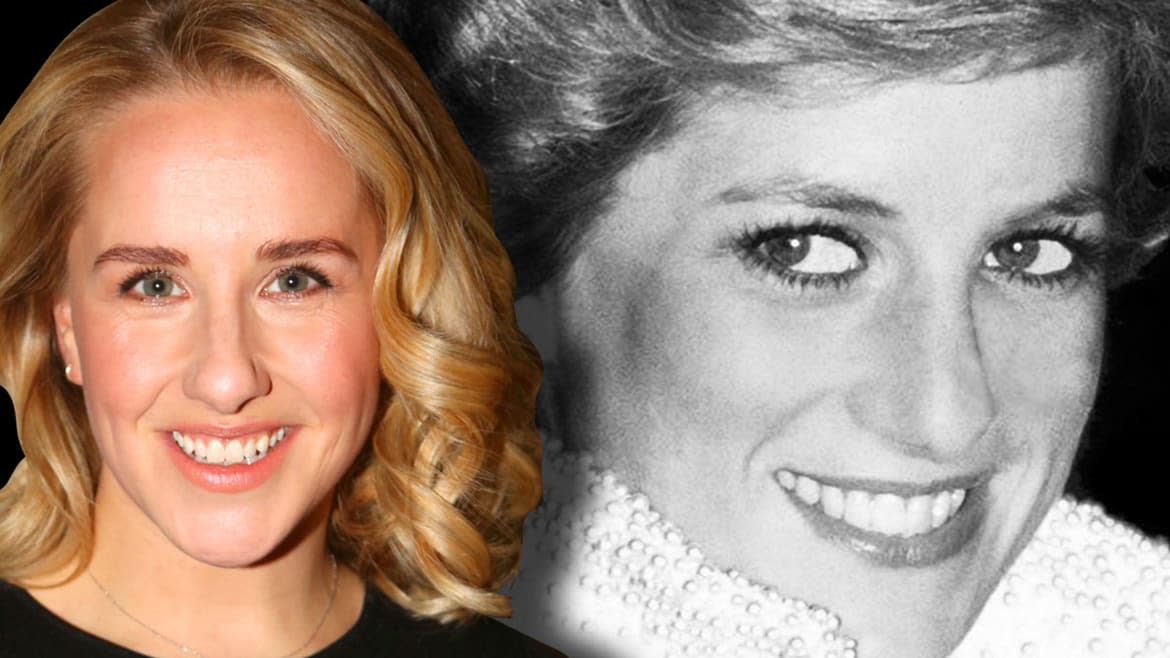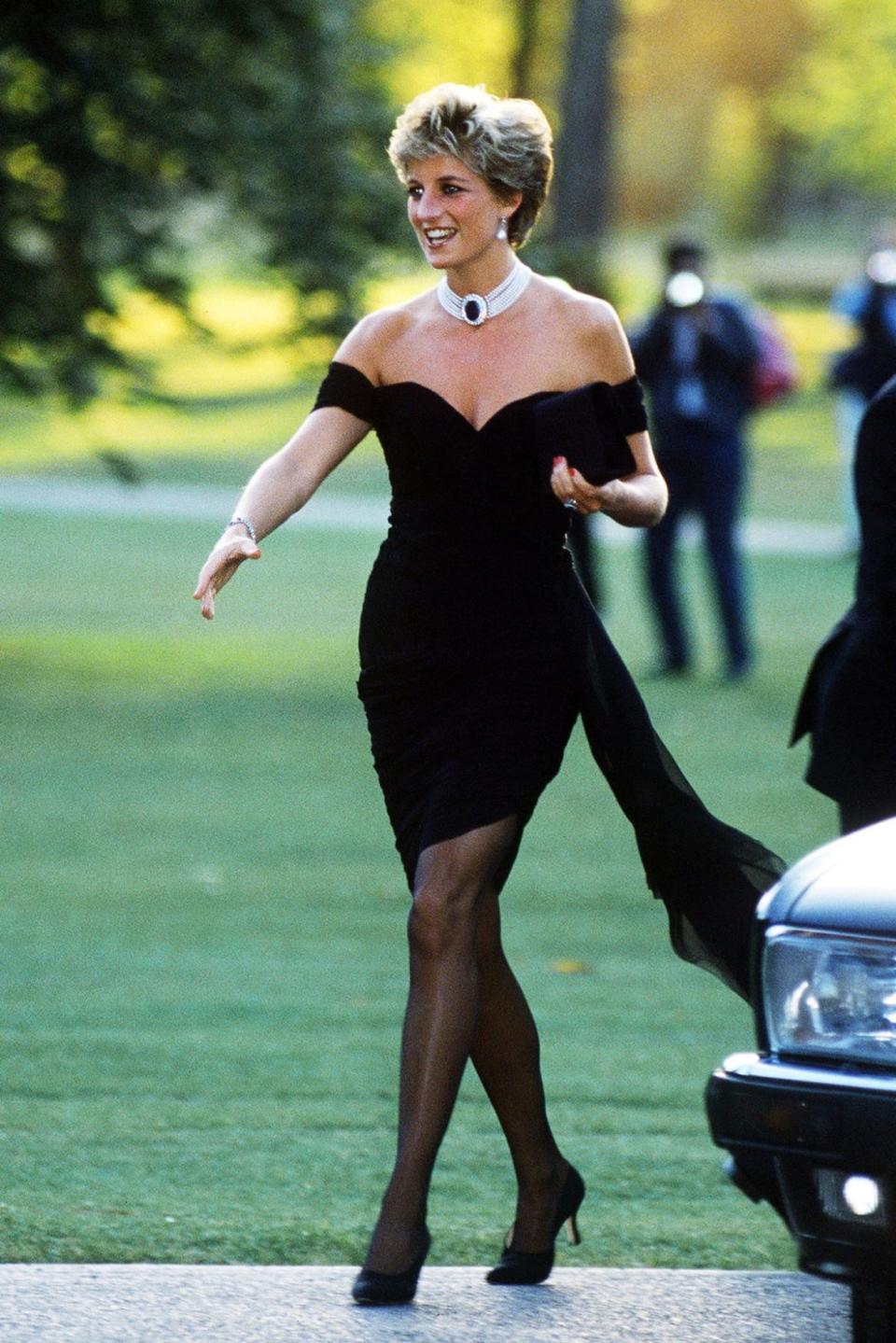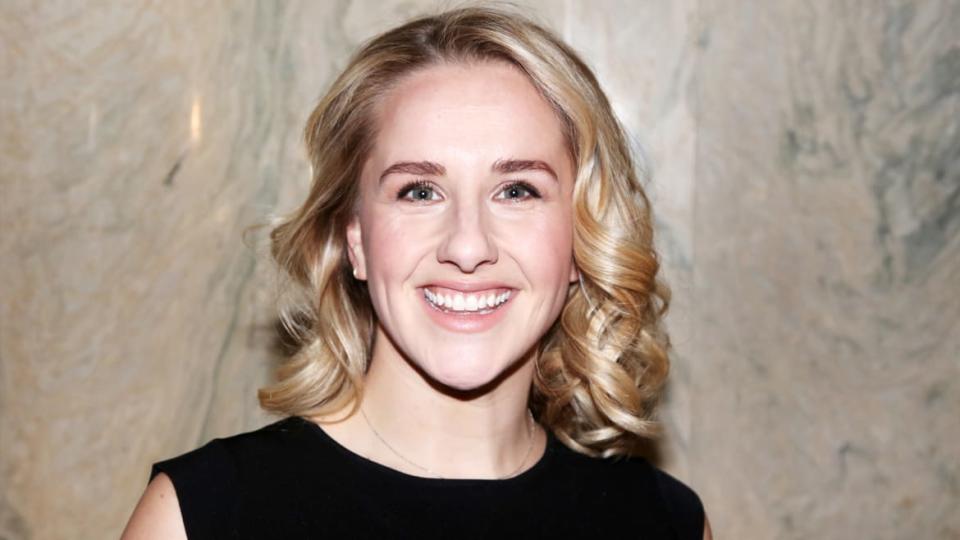Jeanna de Waal on Playing Princess Diana on Broadway: ‘It Is Done With Tact. No One Is Playing a Caricature.’

If you love The Daily Beast’s royal coverage, then we hope you’ll enjoy The Royalist, a members-only series for Beast Inside. Become a member to get The Royalist in your inbox every Sunday.
Jeanna de Waal would love Princes William and Harry to see Diana: A True Musical Story on Broadway, in which she plays the title role of Princess Diana. But, de Waal said, “I understand that watching me play their mother at dramatic moments in her life might be very upsetting for them.”
Yes, the iconic princess’ life—or at least the slice of it that encompasses her marriage to, and divorce from, Prince Charles—is the subject of a musical, in previews at the Longacre Theatre from March 2. It includes the infamous moment that Diana and Camilla Parker Bowles (Erin Davie) allegedly confronted each other at a party when Diana was still married to Charles (Roe Hartrampf), with Diana making it very clear to Camilla that she knew her husband and Camilla were still involved with each other.
Why Princess Diana Will Never Die
To a Brit, a musical like this sounds like it could be headache-inducingly kitsch or in poor taste, or crazy-fabulous, or just plain wrong—or a combination of all the above.
But de Waal insists the musical is serious in intent. It comes to Broadway from playing California’s La Jolla Playhouse, and—to American audiences whose connection to the royal family, and Diana, is inevitably different—the musical offers the chance to simply revel in the glamour and drama of a contemporary, much-loved icon. Written by Joe DiPietro and Bon Jovi’s David Bryan (who together won a Tony for Memphis in 2010), it has a 23-strong panoply of rock and pop numbers to power its narrative along.
Is the show, directed by Christopher Ashley (who directed Come From Away), camp, deadly serious, or both? “This is a musical about Princess Diana, the Queen sings in it,” said the 31-year-old de Waal, sipping a lychee martini at a Broadway sushi restaurant. “There are high-stakes emotions. Musicals can be cheesy when the stakes aren’t high enough, but they are here. It is also done with tact. No one is playing a caricature purposefully. Maybe you’ll think we’re bad, but we are trying to play it as believably as possible. It is not critical of the royal family. We are really trying to portray a human story.”
It is de Waal’s first premier Broadway role. She was 7 when Diana died. She remembers that strange Sunday morning, like most British people waking up to the surreal news, and her mother and grandmother (both British, her father is South African) mourning the princess as so many did. “They loved her, they had watched her grow up and become the woman she was,” de Waal said.
She also remembers watching on television Harry and William walking behind Diana’s coffin at her funeral less than a week later. Her mother was angry at how press photographers would stalk Diana as she did her gym workouts.
The musical, de Waal said, was originally going to be about the Diana-Charles-Camilla love triangle, but Diana herself became the eventual focus. There are 33 dresses designed with great care by William Ivey Long, inspired by Diana’s most famous looks—including the black Christina Stambolian “revenge” dress she wore to London’s Serpentine Gallery the night that Charles admitted adultery on national television. The show has a special song, dedicated to this moment, “A Pretty Girl in a Pretty Dress.”

Princess Diana in her “revenge” dress, designed by Christina Stambolian, in June 1994.
“William is a Diana fanatic. He really knows this, he remembers the outfits,” said de Waal, smiling. “When I first went to his studio, he had all these pictures of her, showing what she had worn and when.” She also uses four wigs to achieve a spooky likeness. “It’s extremely intimidating to play someone so revered for their looks,” said de Waal, laughing.
The costume changes are so fast, “they are like a magic trick,” said de Waal. She disappears from the audience’s view, a team of people surround her, “like a race car at a pitstop”—one to remove a wig, one to unzip her, one to put her into a new dress and shoes—“and out I go again, completely transformed.”
De Waal said she felt English, having moved to the country aged 6. A “citizen of the world,” she now feels very at home in America, having moved here with her entire family 10 years ago. If anyone can make Diana intelligible to an American audience, while keeping a recognizable British core to the character, it is de Waal.
“They’re much more than just celebrities, or gossip, or role models,” de Waal said of the royals. “They’re more than any kind of figure, they’re part of our culture.”
Prince Harry and Meghan Markle getting together, getting married, and now dramatically exiting the royal family has re-enlivened American interest in the royals.
“It makes our show relevant,” de Waal said of Harry and Meghan escaping to Canada, and maybe Los Angeles next. “It’s a little bit of a shame for England. They would have been modern, fantastic ambassadors. But they have a right to happiness. They are entitled to that. I am deeply sympathetic to them. And I thought the royal family handled it well. Everyone spoke candidly about what they wanted to do and why they were doing it.”
“Diana was the origin story of all this,” added de Waal. “Up until her there was a way that the royals spoke to the British public and what they did and didn’t reveal. We haven’t got to the Diana era in The Crown yet, but something happens with her that makes it all different. One could argue Diana was the catalyst that changed the royal family.”
Certainly, the combined metabolisms of scandal and modernity changed the institution when Diana was such a key part of it. The very public breakdown of her marriage, her holding the hands of people with AIDS, her different way of royal parenting, her speaking of her feelings—all ultimately changed the family. Her death, and the appallingly lacking initial reaction of the royal family, showed how out of touch they were. Her sons, and the way they have conducted their lives, are reflections of the change she represented.
But the royal family, in all its generations, is a soap opera; it is still funded by the British taxpayer; it knows it must change, but it also wants to retain its privilege. Harry and Meghan deciding to leave it shows that whatever change Diana brought to the institution is not yet radical enough for younger royals seeking to live a different way.
But Diana’s revolution is still being felt and her legacy is very much visible—evidenced in Harry’s uncompromising bid for freedom. Had Diana lived, de Waal imagines her, like Meghan, being in America, spending time with her grandchildren, maybe taking on some acting roles.
De Waal read Andrew Morton’s bestseller Diana: Her True Story in Her Own Words and watched countless YouTube videos to research her subject. “What struck me was how young she was,” said de Waal. “I had never truly appreciated it. I am playing her at 19 and into her twenties, and thinking how confusing my twenties were. She was just so strong to do the things she did.”
For de Waal, the sobriquet “Shy Di,” which the British tabloids initially christened her, is not the full story. While she does seem shy, particularly in her first major TV interview alongside Prince Charles when they got engaged—and he uttered that now-infamous line, “Whatever love means”—for de Waal there is also a watchfulness in Diana.
“Throughout her life, there is this total presence in the moment. She is not deflective. Whether she is doing charity work or with her children, her focus is on them, with no distraction. I want to emulate her patience. I am quite an impatient person.”
The show sketches key moments of change in Diana’s life, such as her realization of her own fame and public image to develop her own brand, and that Camilla confrontation, after which she decides to reach out to Morton. (Morton, who saw the show at La Jolla, and Paul Burrell, Diana’s former butler, have reached out to de Waal over Instagram.)
“The challenge has been to not make her too naïve, and how to portray her naivety and innocence to be strengths,” said de Waal. “She was always going to become the Diana she became. She just didn’t know about that ‘Diana’ yet. You don’t want the lead of your musical to have everything done to them. It’s easy to dramatize ‘male stories’ about someone who conquers a country, or who takes over an army because they are direct and easy to tell. But sensitivity and sadness”—and a life story with the zig-zagging trajectory of Diana’s—“is harder to dramatize. Once she is on that track she becomes the ‘Diana’ we remember. But the musical asks, how did she and Charles meet, how did he choose her, what was that spark?”
De Waal’s father loved the musical, her mother’s reaction was more complicated, “because it was strange to see her culture played out on stage”—I really do wonder how Diana: A True Musical Story would be received in Britain—and her sister, a software engineer at Google with a previous professional life in musical theater, “just said, ‘Your vibrato sounds great.’”
The sisters organize Broadway theater camps for adults who love the genre as much as they do. When they were younger they would go to restaurants, where their father would proudly announce to the waiting staff, “They’re actresses.”
“Shut up dad,” the mortified sisters would reply in unison.
“I feel such a responsibility to Princess Diana. She’s so present and in the zeitgeist”
De Waal grew up in Solihull, in the West Midlands. Age 11, she attended a performing arts boarding school, the Arts Educational School, in Tring Park, Hertfordshire (“where we spent most of the day performing and carried on dancing in the dorms”), and then underwent “a baptism of fire” at the Liverpool Institute for the Performing Arts, where she learned techniques, such as how to control and amplify her voice and how to do comedy (“I never thought I was a funny person”).
Her education—and the performing arts was all she ever wanted to do, either on or off stage—taught her that “the ones really succeeding were the ones really trying.”
Of several “truly transcendent” productions she saw as a child, a production of A Raisin in the Sun, which she saw when she was 7, “blew me away.” The family came to New York City for vacations, “and basically we put our bags down and headed right out to see shows. I didn’t know New York existed beyond Times Square.” She remembers seeing Rent, “and seeing Idina Menzel do something weird with her tongue. It imprinted on my brain.”
As a musical theater actor, she appeared in the national tour of Wicked (as Glinda), American Idiot, Wicked, Kinky Boots, Finding Neverland, Waitress, and the deliriously odd Carrie: The Musical, in which she played the villainous Chris.

Jeanna de Waal.
Like so many actors between engagements, de Waal has done jobs like being a cater-waiter. Just before heading to La Jolla, she was at one party, serving guests who included the assistant choreographer of Diana: A True Musical Story (they toasted to the La Jolla production).
“In New York, there are a million readings, a million workshops—everyone is trying to cultivate the next Wicked,” said de Waal. “You are constantly learning by being in rooms with people who are so much better than you. I could be back to being a cater-waiter next year. This is the most exciting city, and that can also be overwhelming.”
Not having work or getting rejected did make de Waal feel “pessimistic,” but she was also determined to do, and pursue, the career she loves. She spoke with relish about being exhausted before a Saturday night performance, and then raring to go, and “finding joy” in a show you’ve been performing for seven months, the “nuggets of friendship” built up over performing in a company.
And now, de Waal is the star. By the time you read this, she will have picked her dressing room. She works out with a personal trainer in a private gym every morning. She was about to be flown in a private jet to the Bahamas to perform at a conference. She even has a “press wardrobe” for the gazillion on-screen interviews she is set to do.
“It’s so confusing,” de Waal said, roaring with laughter.
“Just wait till you get to previews,” and “Are you ready?” she has been told by assorted Broadway veterans. They mean the press, the making changes as the previews process continues, the long days, “everyone looking at you.” And above all of it orbits the princess herself. “I feel such a responsibility to Diana, she’s so present and in the zeitgeist. I love the public support of Harry to leave the monarchy [which wasn’t total by any means].”
The real challenge for a performer, especially in the winter, is to ward off colds and various germs. The theater has just ordered 30 protective masks for the cast, which she may take advantage of near to opening. She takes vitamins, drinks Fire Cider tonic, she has a steamer and humidifier at home. “For a singer there is no better medicine than water and sleep. If your voice goes, shut up and sleep. In 10 or 12 hours, your voice will be back.”
Away from the stage, de Waal is a “homebody” who lives with her boyfriend of three years André Thomas, who works for Morgan Stanley, whose offices are in Midtown. He and his colleagues see her face on the Diana: A True Musical Story marquee as they enter and leave work every day. “I don’t look at you differently,” Thomas told her. We both laugh that she should respond, “Well, you should.”
De Waal wanted to be “articulate enough” to discuss finance with Thomas and his colleagues, so took an exam aimed at those wanting to get into business school, “and did very well,” she said proudly. She also successfully applied to two business schools, Stanford and Wharton.
De Waal’s dream, as-yet-unperformed roles are Funny Girl, the Witch in Into the Woods, and Elphaba in Wicked, “now that I’ve done Glinda. And I would love to play Hillary Clinton. She is complicated and fascinating, a woman who has endured and overcome several incredible hurdles in life in an incredibly public spotlight.”
Which also sounds an awful lot like the experience of Princess Diana.
Get our top stories in your inbox every day. Sign up now!
Daily Beast Membership: Beast Inside goes deeper on the stories that matter to you. Learn more.

